Xiaomi Black Shark 3 Review
Xiaomi Black Shark 3 Review
Is this 2020's best gaming phone?
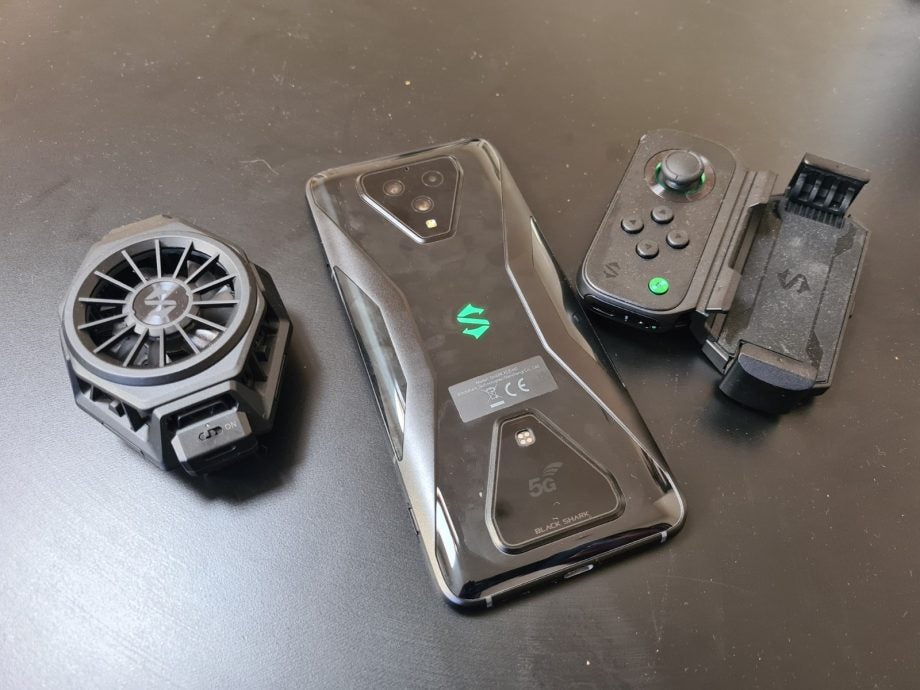
Verdict
The Black Shark 3 doesn’t revolutionise the gaming phone market. But it ticks all the right boxes that the limited number of Western gaming phone users look at. It comes with a decent high refresh rate screen, powerhouse parts and a distinct gamer-focused design. The only downside is some of the features will likely put off more casual gamers and regular phone buyers.
Pros
- Flagship specs and performance
- Wealth of great features for gamers
- Excellent screen
- Competitive price
Cons
- Design will put non-gamers off
- Software additions aren't uniformly positive
Key Specifications
- Review Price: £649
- 5G connectivity
- 8 / 12 GB RAM
- 128 / 256GB storage
- Qualcomm Snapdragon 865 CPU
- 6.67-inch FHD+, 90Hz, AMOLED screen
- Triple sensor rear camera: 13MP ultra-wide, 5MP bokeh, 64MP clear lenses
The Black Shark 3 is the latest gaming phone from Xiaomi’s upstart subsidiary.
It sits below the Black Shark 3 Pro in the company’s current line up and aims to entice avid CoD and PUBG mobile players by offering flagship-level specs, plus a wealth of gaming-focused features, at a bargain price. These include a high refresh rate screen, improved cooling and support for the firm’s diverse portfolio of mobile gaming peripherals.
With pricing starting at a £539 the phone’s hardware is undeniably strong and the Black Shark 3 is a great handset for the niche, hardcore mobile gaming community it targets.
It has an ostentatious design and a few niggling issues with the phone’s software hinder it’s appeal to regular buyers, however. If you want something a little more traditional, there are plenty of other best mid-range phones and best phones.
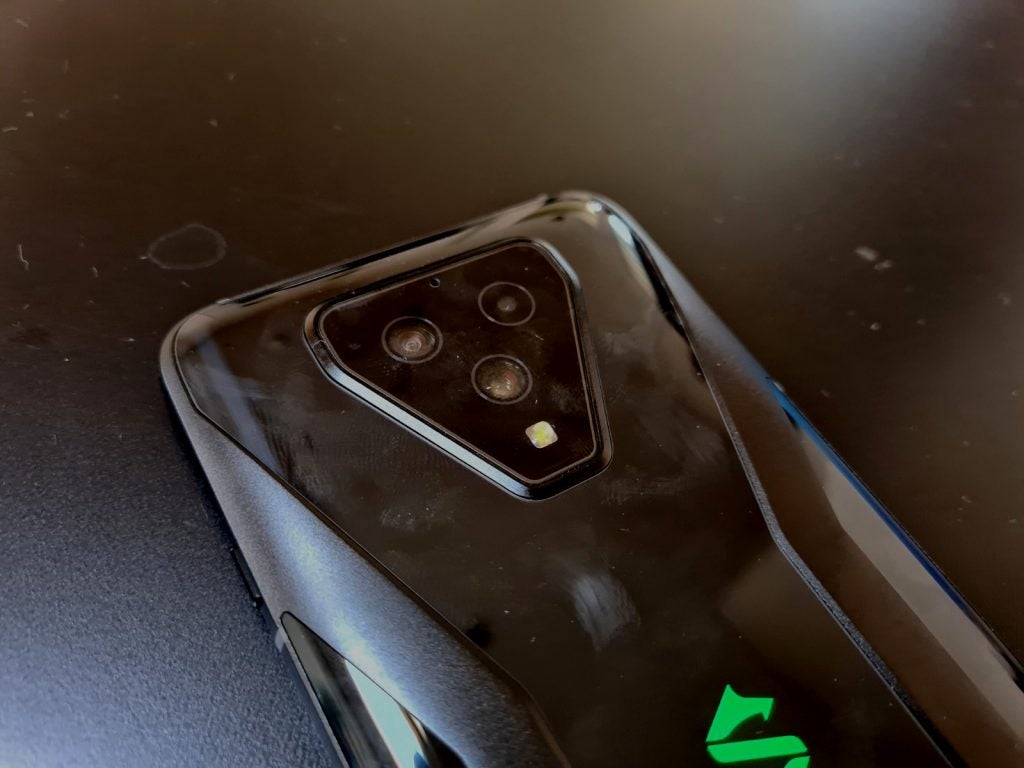
Black Shark 3 design – A distinctly “gamer” look
Gaming phones always have marmite designs. The original Razer Phone had a uniquely blocky chassis, and Asus’ ROG Phones looked like they were built by Star Trek Klingons.
The Black Shark 3 is no different and has a distinctly “gamer” look. It features elements traditionally associated with over the top custom-built gaming PCs.
These include full-fat RGB lighting and a custom “X Core” design that loads two symmetrical diamond shapes onto the phone’s back – one for the camera housing and one for the optional magnetic charge cable’s connector.
I’m not a huge fan of RGB lighting on gaming PCs and laptops as, outside of keyboards, it’s, for the most part, a flashy excess that ramps up the devices’ price and makes it look like a children’s toy. The latter is still an issue on the Black Shark – trust me, outside of the ROG Phone 2 you won’t find a gaudier mobile – but it partially solves my primary quibble by offering easy to view notification alerts.
Round the side, there’s a custom switch which is used to turn the phone’s Shark Space 3.0 software on and off. Shark Space is a game-specific UI that lets you manage the phone’s peripherals, stream games and create custom profiles for specific apps. The feature is useful when gaming, but I can’t help wish the input was customisable so I could use it to do other actions, like silencing the phone.
Black Shark’s also made a few under the hood tweaks to boost the phone’s gaming chops. The three most important are its peripheral support, custom cooling system and atypical antenna placement.
Peripherals are a common site since Asus kicked off the trend with the original ROG Phone and the line up on offer here is pretty similar. With the Black Shark 3, you’ll be able to buy and attach optional BlackShark FunCooler Pro, Gamepad 3 peripherals and charge it using an 18W magnetic cable.
The fun cooler does what it says on the tin and helps stop the phone overheating and CPU throttling during prolonged game sessions. The gamepad slots onto the handset’s left side and gives you a physical joystick and d-pad to play with.
The peripherals are easy to use, and the gamepad, in particular, is great for PUBG to the point it feels like cheating. But given that you have to pay £50 more just to get the gamepad alone it is a pretty expensive luxury.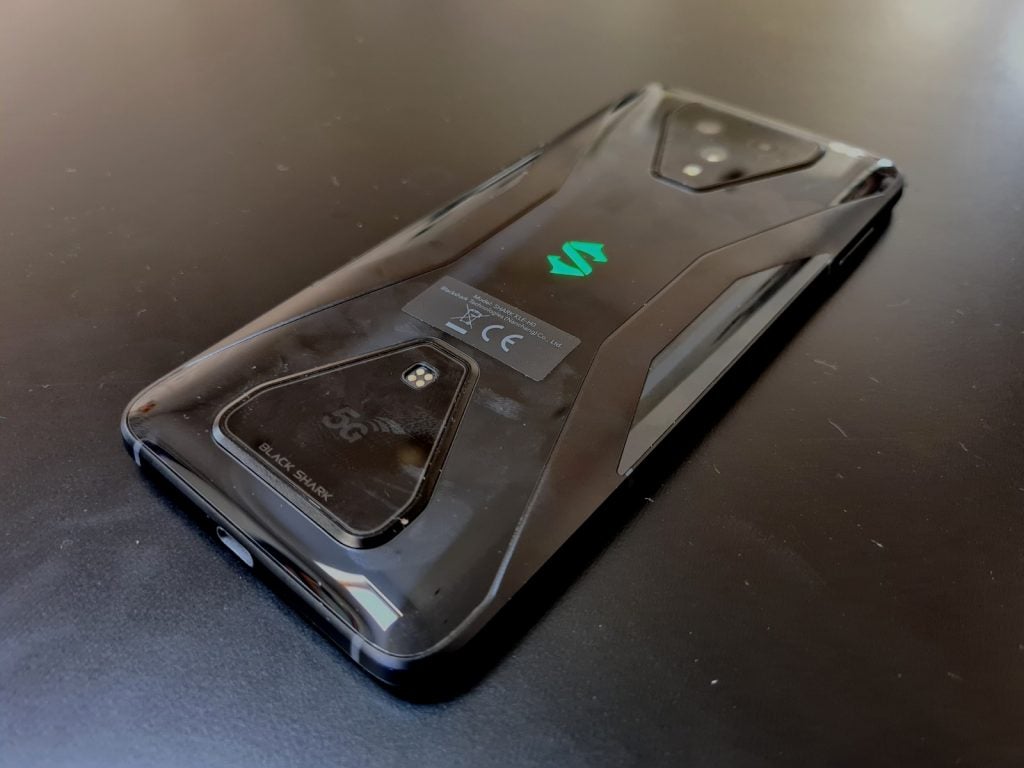
The fan cooler will also feel a little superfluous for anyone other than the most hardcore of gamers as the Black Shark 3’s new “Sandwich Liquid Cooling” system is fairly competent in its own right. The system places two super long cooling pipes in a doubled sided structure. According to Black Shark, the systems cooling area is 100% larger and 50% more efficient than the one seen on the Black Shark 2. Running CoD Mobile for prolonged periods, the system worked great, and I didn’t notice any background heat, even after 30 minutes playtime – when competing handsets like the Galaxy S20 start to warm up.
The “dual X” antenna design is another subtle, but on paper useful, gaming-focused feature. This has seen Black Shark litter the ten antennas around the phone’s sides in a way that, it claims, will ensure you never lose connectivity holding the phone in landscape, as pretty much all games require. Given that we’re in lockdown I haven’t a chance to test this, but it’s a neat touch if it works.
These features aside, the marmite design factor’s not helped by the fact it’s significantly chunkier and heavier than most competing, non-gaming, 6.67-inch handsets. This isn’t to say it’s as ridiculously big as it’s Pro sibling, which features a gigantic 7.1-inch screen, but it will take regular phone users some time to get used to its increased heft.
Despite its heft, the phone doesn’t feature any formal IP water resistance rating. This is relatively common on phones that are trying to remain semi-affordable, as you have to pay to get a handset IP certified. Thankfully, even without the IP rating, the Black Shark 3 feels well made – like a Nokia Lumia from the days of yore, and I’m reasonably sure the floor will come out worse if you accidentally drop a Black Shark 3 on it. It just means you’ll want to avoid giving it an accidental aquatic adventure.
The in-screen fingerprint scanner rounds off the phone’s main design features. During testing, the scanner worked just fine and generally didn’t throw up any false positives or struggle to read my digit.
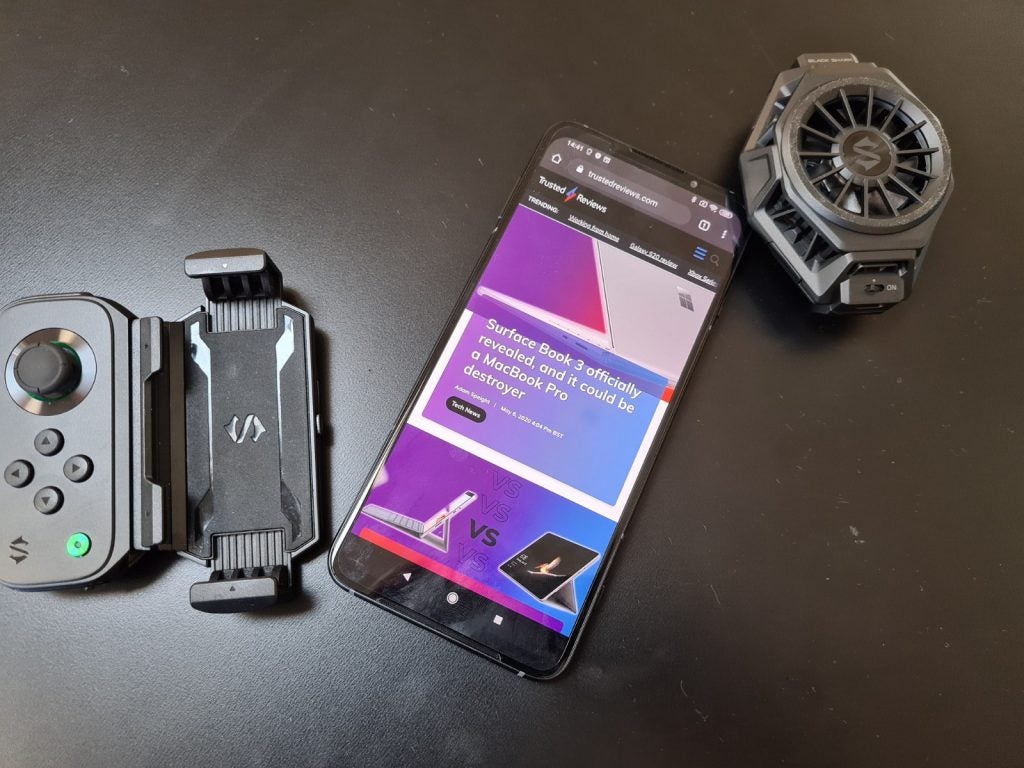
Display – Pretty par for the course by gaming phone
On paper, the Black Shark 3’s 6.67-inch FHD+, 90Hz, AMOLED screen is pretty par for the course by gaming phone standards and roughly in line with other similarly priced handsets, like the OnePlus 8.
Spec heads will instantly ask why the phone has a 90Hz, not 120Hz display like the one seen on the Galaxy S20. According to Black Shark, it’s because most games don’t support 120Hz and doing so would radically ramp up the phone’s cost. Both points are fair, and for the most part, the display is great.
With the 90Hz setting on the phone is butter smooth to use. Paired with a 270Hz touch reporting rate, with 24ms touch latency – which makes it on paper 30% more reactive than Black Shark 2 Pro – it’s also radically more responsive than most competing handsets. Playing CoD and PUBG, there is no noticeable delay between me pressing the screen and the action happening.
The use of an AMOLED panel also means blacks are wonderfully inky, and support for the HDR10+ standard means compatible content looks wonderfully dynamic. My only slight quibble with screen quality is that colours look a little overcooked and it’s handling of varied refresh rates, like all phones, is a little clunky.
Like pretty much every phone the Black Shark’s isn’t truly variable. You have to go into the settings and tell it if you want it to run at 60Hz or 90Hz. I’ve always argued phones need to become truly variable and be able to optimise their refresh rate depending on what’s happening. These include things like running at the Hz rate of video content being played and lowering the number of images being rendered per second when there’s no benefit to a higher rate – a key move that will let it conserve battery.
Considering the fact no phone’s managed to do this yet, the lack of the functionality on the Black Shark is a forgivable omission, however.
The bigger issue is the phone’s super cinema mode. This is an annoying feature that forces video content to play at 90Hz, even if it’s not mastered that way. This creates a soap opera effect that makes even the best shot movie look terrible. Thankfully you can turn it off in the settings menu, which I strongly suggest any buyer does the moment they power the phone up.
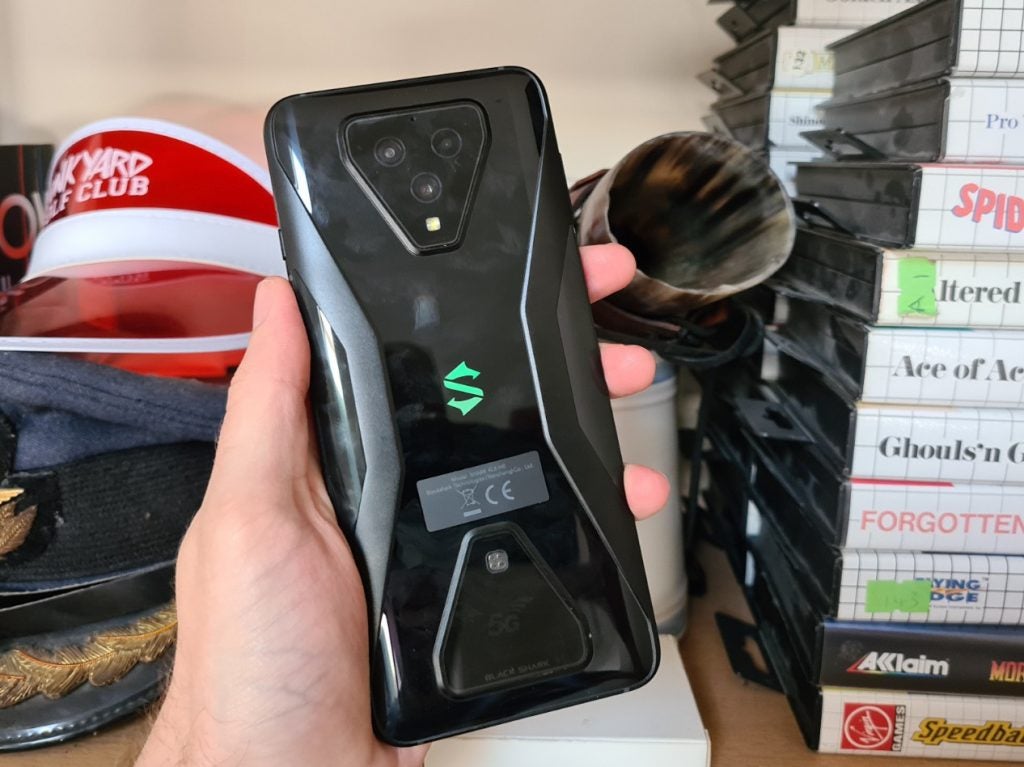
Performance – The Black Shark 3 is more than powerful enough
When it comes to graphical grunt, the Black Shark 3 is firmly in flagship phone territory. Under the hood, you get a Qualcomm Snapdragon 865 CPU, with 5G connectivity and a choice of either 8GB (tested) or 12GB of RAM. This puts it in the same league as considerably more expensive handsets, like the Galaxy S20 Ultra and OnePlus 8 Pro.
The 8GB version I tested is more than powerful enough to run pretty much any app or game in the Play Store with zero issues. PUBG runs at its highest graphics settings with zero issues, and the phone’s cooling system meant I never experienced any CPU throttling.
Data speeds are also solid with the phone’s chipset supporting Wi-Fi 6 and 5G connectivity. Though given the current lockdown, I didn’t get a chance to check how the Black Shark 3 handles the latter.
Software – A mixed bag
Over the top Android skins have been a key issue plaguing most gaming phones. This continues with the Black Shark 3.
The custom JoyUI 11 skin Black Shark’s loaded over Android 10 isn’t the worst I’ve seen, but it’s still a mixed bag. It’s not as bad as the ROG Phone’s skin, but it adds some bloatware and makes a few pointless UI changes – why phone makers insist on swapping Android’s native contacts, calendar and file management apps for lessor clones in this day and age is beyond me.
Camera – Impressive considering the price
The Black Shark 3’s rear camera’s specs are impressive considering the phone’s price. It comes loaded with a tri-camera setup built of 13-megapixel ultra-wide, 5-megapixel bokeh and 64-megapixel clear (main) lenses.
The app also features all the various modes you’d expect, including auto, portrait, pro, night and panorama. There’s also a custom 64-megapixel option that lets you capture outright gigantic photos.
In the out of the box, the auto mode picture quality is more than good enough for sharing on social media. Shutter speeds are also reasonably good, and there’s not too big of a delay between you telling the phone to take a photo and it happening.
But the Black Shark 3 doesn’t match the quality of competing flagships, like the OnePlus 8 in a couple of key areas.
For starters, low light performance. Though the phone’s camera is functional in low light, shutter speeds begin to chug, and noise can on occasion creep in. Contrast levels also go out of the window, and light sources in dark conditions uniformly look overexposed.
The portrait mode works reasonably well, but it is more prone to picking up aberrations when making bokeh effects than competing handsets. The camera also has a tendency to overprocess shots, particularly when shooting in the 64-megapixel setting.
This isn’t to say the camera is bad, it’s just not quite as good as most similarly priced non-gaming handsets. You can see a selection of photos taken on the Black Shark 3 below.
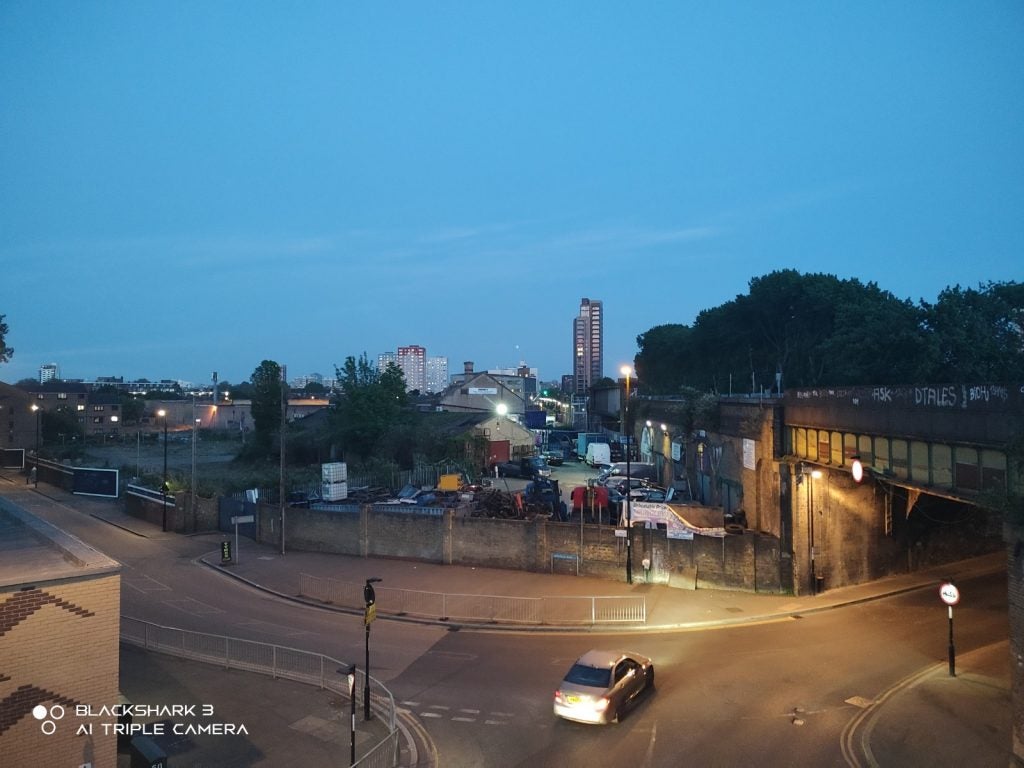

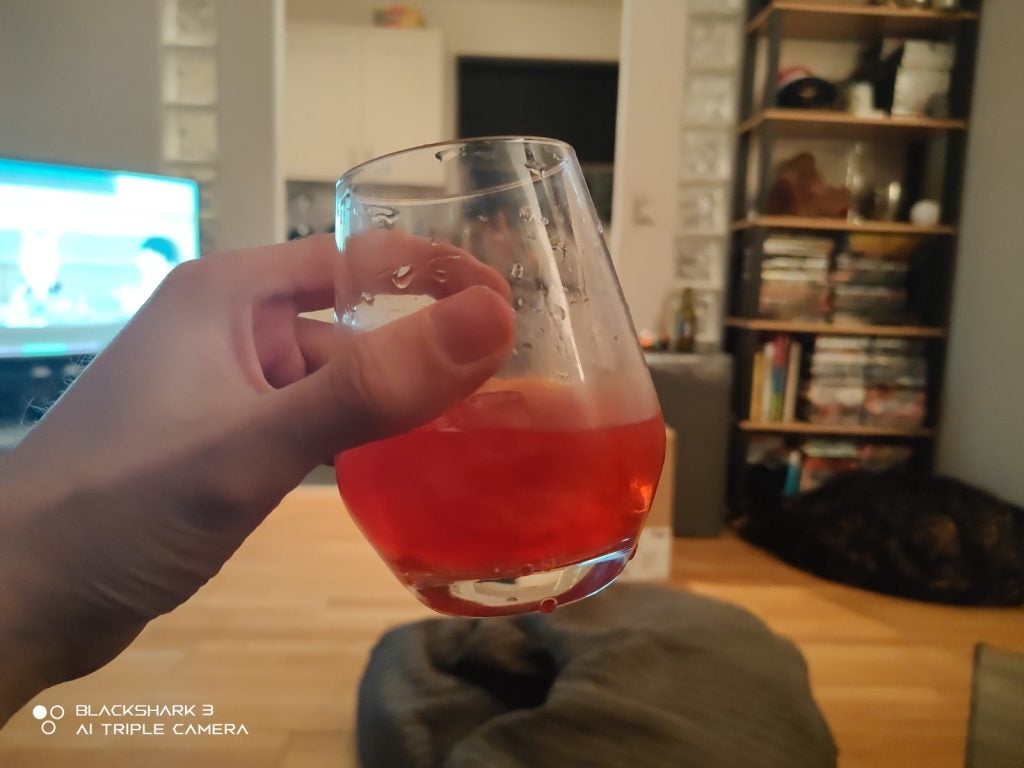
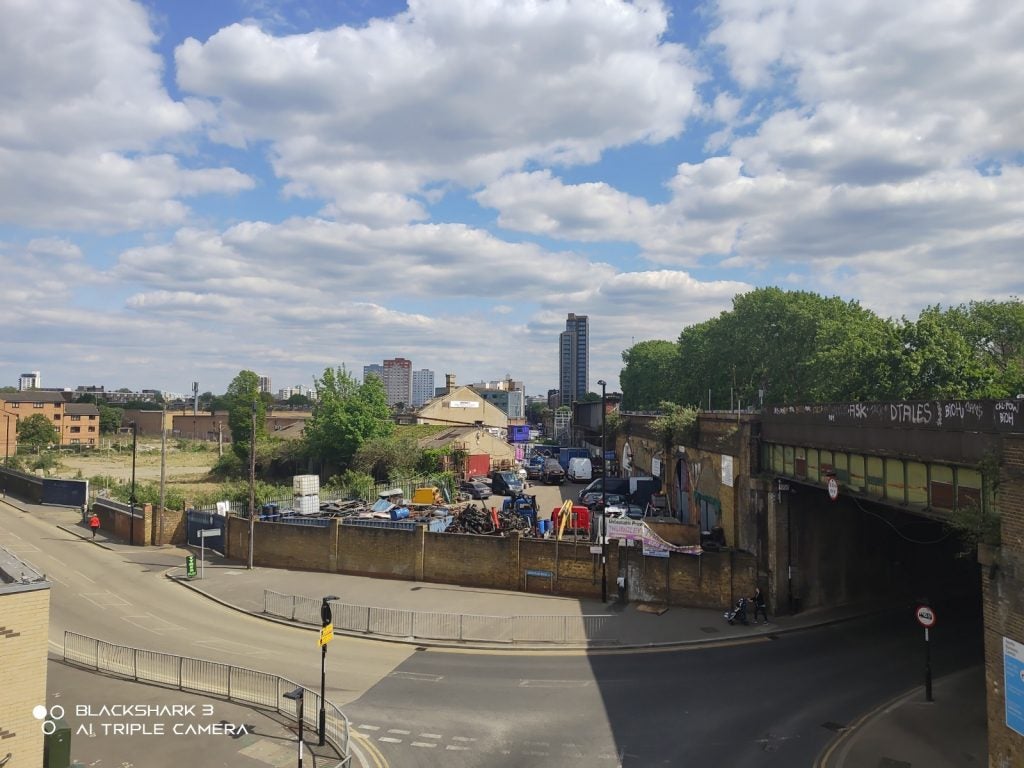
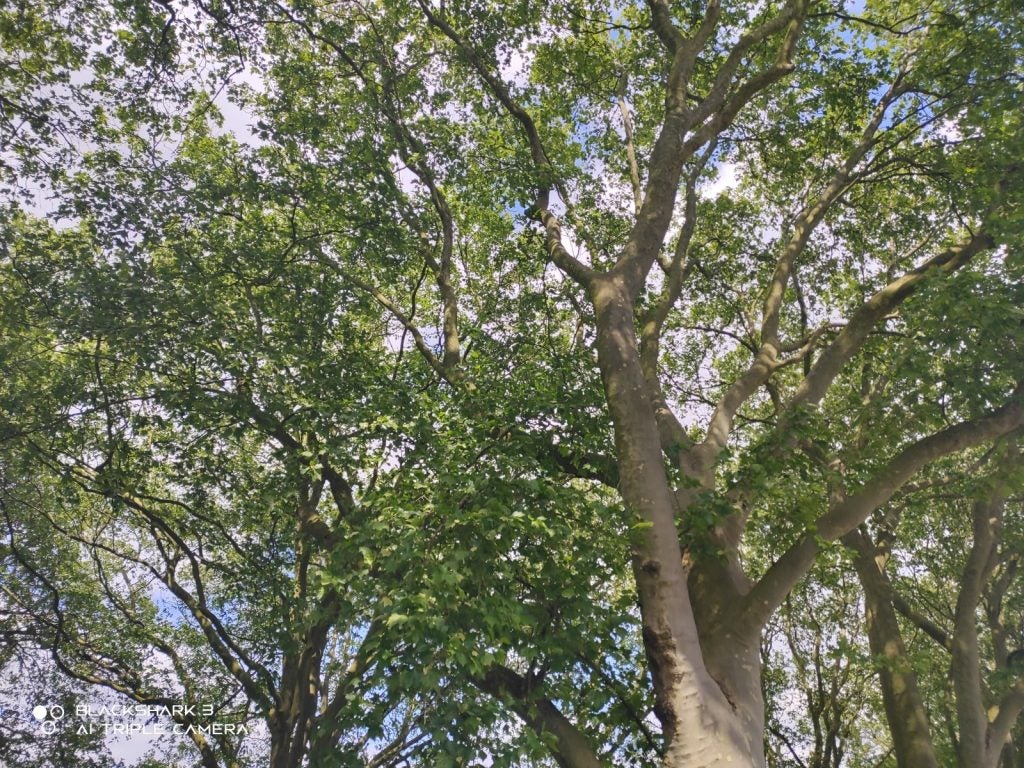
Battery life – The Black Shark 3 has a giant battery, but performance is fairly average
The Black Shark 3’s powered by a giant 5000mAh battery. Using it as my main work and personal phone, I generally got between a day to a day and a half’s use out of it in the 90Hz setting.
An average day entailed listening to music, watching a couple of videos, a couple of games of CoD plus regularly checking and responding to incoming messages.
More intensive tasks do put a bigger drain on the battery, however. Streaming video over Wi-Fi the phone lost an average of 8-10% of its charge per hour with the cinema mode turned off. This is again fairly average for a 2020 flagship.
Gaming in 90Hz the battery discharged slightly faster than expected. On average it lost around 22-25% of its charge per hour playing PUBG and CoD in 90Hz. This went down to around 15-18% when the screen was locked to 60Hz, which is more in line with competing flagships.
Thankfully the addition of 65W fast charging tech means the phone is lightning fast to recharge if you use the supplied plug.
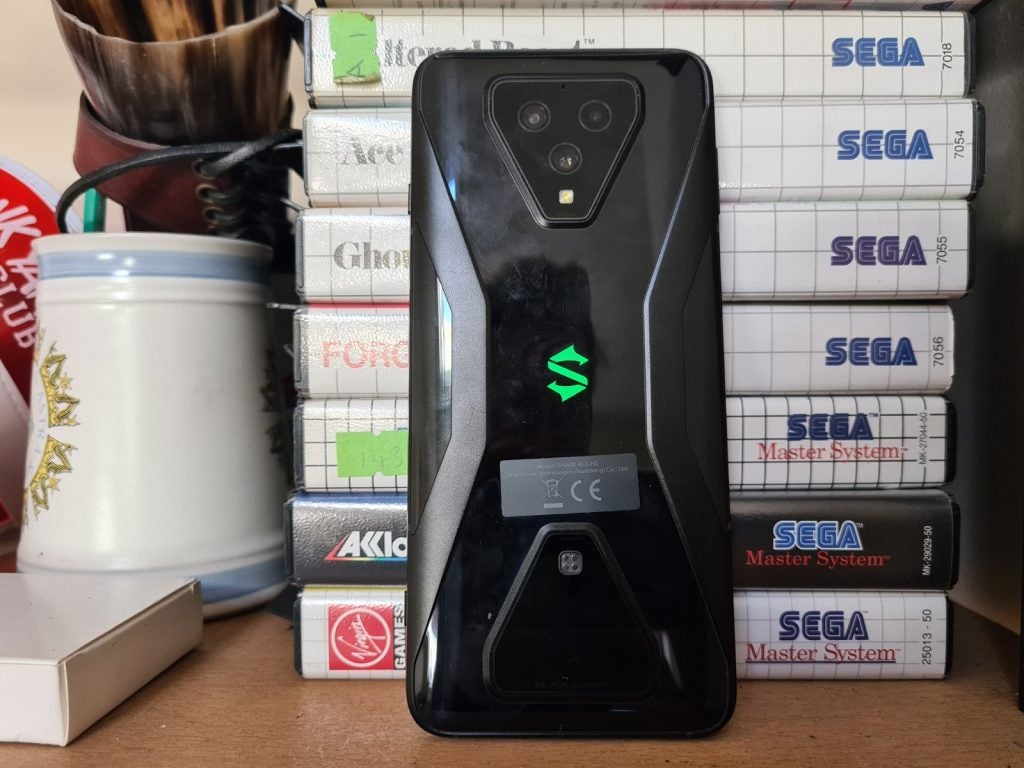
Should you buy the Black Shark 3?
If you’re part of the small number of people that actively want a gaming phone, then the Black Shark 3 is an excellent option. Under the hood, it has all the bells and whistles you’d expect of a top-notch gaming phone. With pricing starting at £539, it’s also very competitively priced.
However, it’s over the top design and overtly gaming focussed software will likely put off most regular buyers.
How we test phones
We test every mobile phone we review thoroughly. We use industry standard tests to compare features properly and we use the phone as our main device over the review period. We’ll always tell you what we find and we never, ever, accept money to review a product.


